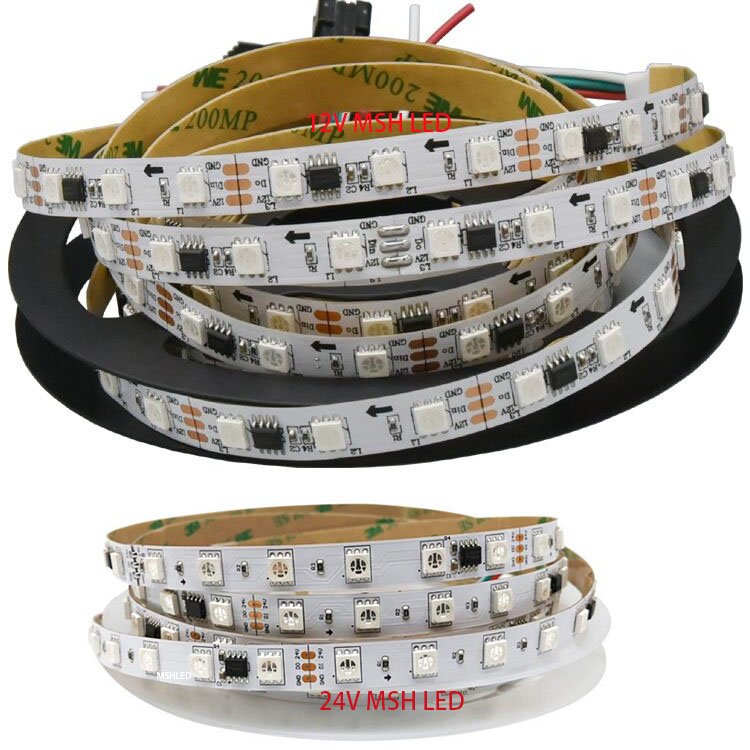Today I am comparing the different normal addressable led strips, talking about their technical specifications, then I’m gonna help you figure out which one is the best-led strip lights for your project.
5V Addressable Strip
WS2812b led strip lights
The most well-known chip currently is the ws2812b chip. This chip became very famous partly because Adafruit gave it the name “Neopixels” and made it available to the general public a few years ago.
It can do 30LEDs/M, 60LEDs/M, 144LEDs/m. Black and White PCB.
One Pixel with One LED, each LED can be cut. Detail as below, It with all WIFI controllers and Offline controllers.
Ws2813 led strip
Refresh Frequency updates reach 2 KHz, 5v compatible, and dual signal wires so that if one led gets damaged, the signal should still transfer to all other chips. (almost same with ws2815, but voltage different).
Any led broken will not affect another led unless two consecutive LEDs are broken.
30LEDs/M, 60LEDs/M,144LEDs/M.
| PN | Working current | Working temperature | Package | LED number | Viewing angle | Lifespan | Working voltage | Pixel/M |
| S010030-WS2813RGB | 1.8A/meter | -40℃~60℃ | 5meter/roll | 30pcs/meter | 140 | 50000h | DC 5V | 30Pixels/M |
| S010060-WS2813RGB | 3.6A/meter | -40℃~60℃ | 5meter/roll | 60pcs/meter | 140 | 50000h | DC 5V | 60Pixels/M |
| S012144-WS2813RGB | 8.64A/meter | -40℃~60℃ | 2meter/roll | 144pcs/meter | 140 | 50000h | DC 5V | 144Pixels/m |
SK6812 RGBW LED Strip
This chip runs PWM at about 1.2kHz making it better in the regard to the ws2812b too, and Adafruit used it the same with ws2812b. It does RGBW mostly.
APA102C (SPI) LED Strip
APA102 PWM Frequency is 19khz
It also isn’t a clockless chip with only three wires (+, -, data) but instead uses a 4 wire protocol (+, -, clock, data). The APA102 also has some advantages in regards to settable brightness and tune-able color spectrums. APA102 is also the brightest LED strip before, so if you need a lot of light output, this might be your LED chip! The APA102 can also be bought in full white variants giving you for instance warm white addressable LED strips.
SMD2020 APA102C and SMD5050 APA102C for your choice.
1)SMD2020 APA102C 200leds/m, 288leds/m,
2) SMD2020 APA102C, 72leds/PC, 227cm length customize.
3)SMD5050, APA102C, 30LEDs/M, 60LEDs/M, 144LEDs/M. Black and White PCB.
12V strip light
WS2815 led strip
A new chip from the creators of the WS2812B and compatible with the same protocol. The main improvements are a higher internal PWM frequency (around 2kHz), 12v compatible (5v logic signal), and dual signal wires (DI, BI, GND, 12V), so that if a chip gets damaged the signal should still reach all other chips. This causes ws2815 to use more watts than a ws2812b running the same pattern.
WS2811 LED Strip
It is the cheapest addressable led strip, It is one signal cable, three cables (GND, DAT, 12V/24V), The voltage 12V/24V both available. RGBW and RGB color for more choice.
WS2811 IC uses pixel light and Amusement Pixel light widely.






